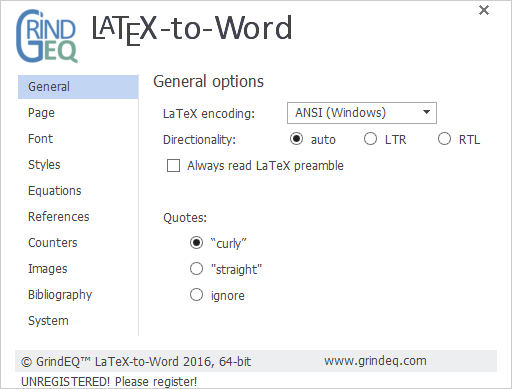

- #Using latex for word how to#
- #Using latex for word code#
- #Using latex for word professional#
- #Using latex for word free#
Other classes include book (chapters, sections, etc.), report (similar to the book class but for single-sided printing), letter, slides, and beamer. In this section of the tutorial, we are going to deal with spacing inside math mode.There are many types of document classes. However, as with the rest of the commands, you can leave as much space as you want after the \ command only one will be printed.

Note that in the above code, we didn’t leave any space between the dot and the space command if you leave any, it will be treated as usual inter-word spacing and will be added to the space generated by the command. You can compare it with the case we don’t tell TeX that the point does not end the sentence, this adds extra space: This will produce the following result with correct spacing.:

#Using latex for word free#
You can find books about literature, maths, history, etc.\ and they are all free
#Using latex for word code#
You can tell TeX that a period doesn’t end a sentence by using a \ command (that is, a \ character followed by a space or the end of a line you can think of it as an empty command) to make a usual space after the period.įor example, the following code will prevent extra space after the period of “etc.” : % Space after period This works most of the time, but not always: the most remarkable exceptions are abbreviations like ‘etc.’. The algorithm that TeX follows is simple: it just assumes that a period ends a sentence unless it follows an uppercase letter. While easier for a human typesetter, this is a difficult task for a system like TeX, since it may have trouble deciding which periods end sentences. Typesetters often put a little extra space after a sentence-ending period. This means that, i nside the preamble, they affect the whole document, but inside an environment or group they only affect the current environment or group.
#Using latex for word how to#
We will talk about both the commands provided to produce spacing inside math mode and how to use them properly in a variety of situations. The contents of this section will be very useful to produce good-looking equations and mathematical expressions.
#Using latex for word professional#
Although you may have not noticed, spacing after sentences is a bit larger than between words in professional books. After that, we will deal with dots and spacing.Then, we will see what predefined lengths for different spaces of the page ( margins, indentation, and separation between paragraphs) have LaTeX built-in and how we can change them in different ways.We will also talk about infinitely stretchable space, one cool tool that can be used, among many things, to align text.



 0 kommentar(er)
0 kommentar(er)
